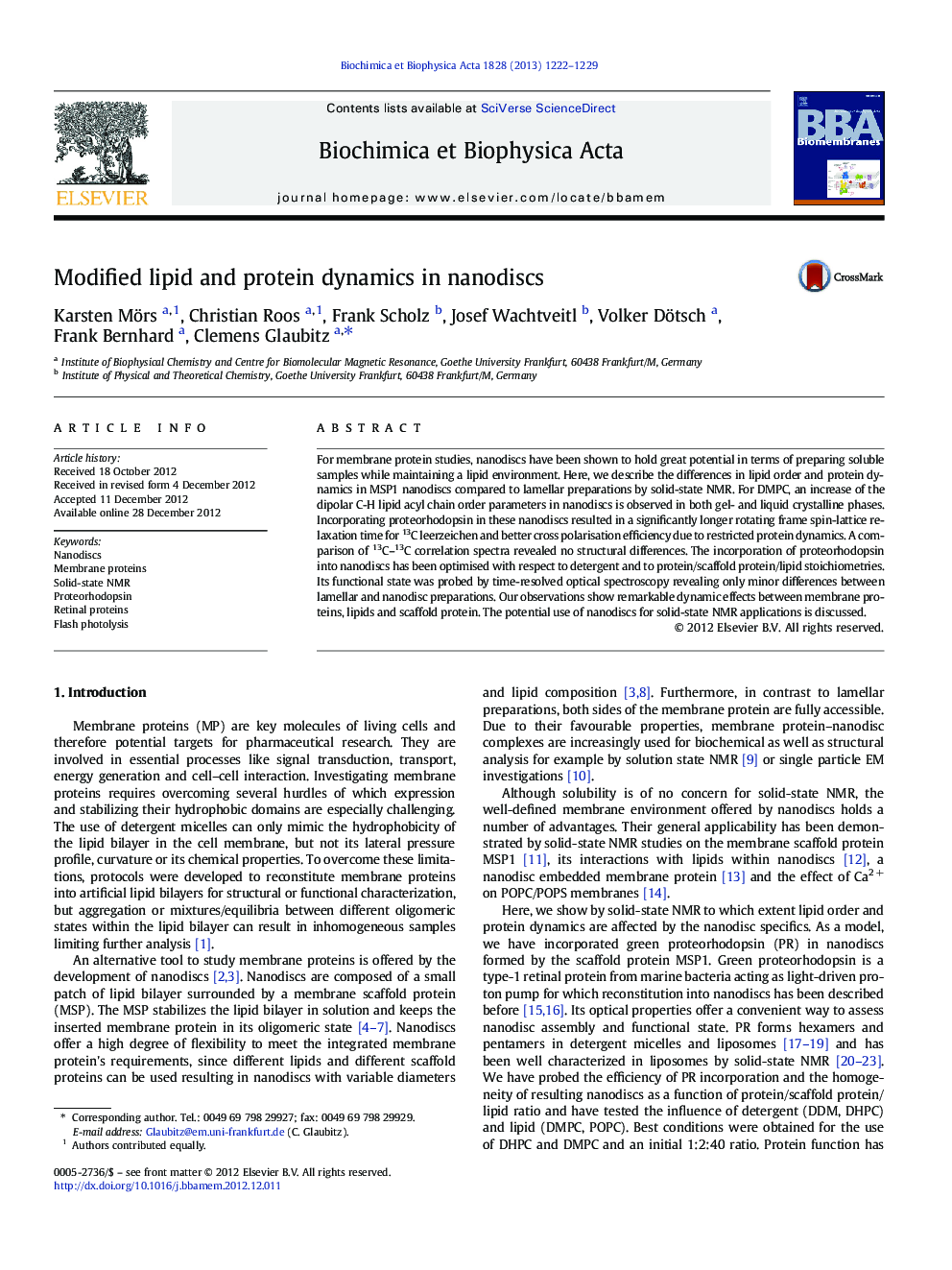| Article ID | Journal | Published Year | Pages | File Type |
|---|---|---|---|---|
| 1944337 | Biochimica et Biophysica Acta (BBA) - Biomembranes | 2013 | 8 Pages |
For membrane protein studies, nanodiscs have been shown to hold great potential in terms of preparing soluble samples while maintaining a lipid environment. Here, we describe the differences in lipid order and protein dynamics in MSP1 nanodiscs compared to lamellar preparations by solid-state NMR. For DMPC, an increase of the dipolar C-H lipid acyl chain order parameters in nanodiscs is observed in both gel- and liquid crystalline phases. Incorporating proteorhodopsin in these nanodiscs resulted in a significantly longer rotating frame spin-lattice relaxation time for 13C leerzeichen and better cross polarisation efficiency due to restricted protein dynamics. A comparison of 13C–13C correlation spectra revealed no structural differences. The incorporation of proteorhodopsin into nanodiscs has been optimised with respect to detergent and to protein/scaffold protein/lipid stoichiometries. Its functional state was probed by time-resolved optical spectroscopy revealing only minor differences between lamellar and nanodisc preparations. Our observations show remarkable dynamic effects between membrane proteins, lipids and scaffold protein. The potential use of nanodiscs for solid-state NMR applications is discussed.
Graphical abstractFigure optionsDownload full-size imageDownload high-quality image (187 K)Download as PowerPoint slideHighlights► Incorporation of proteorhodopsin into nanodiscs has been optimized. ► An increased order of lipid chains in nanodiscs compared to liposomes was found. ► The dynamics of proteorhodopsin is restricted in nanodiscs compared to liposomes. ► Structure and function of proteorhodopsin in nanodiscs are not altered.
